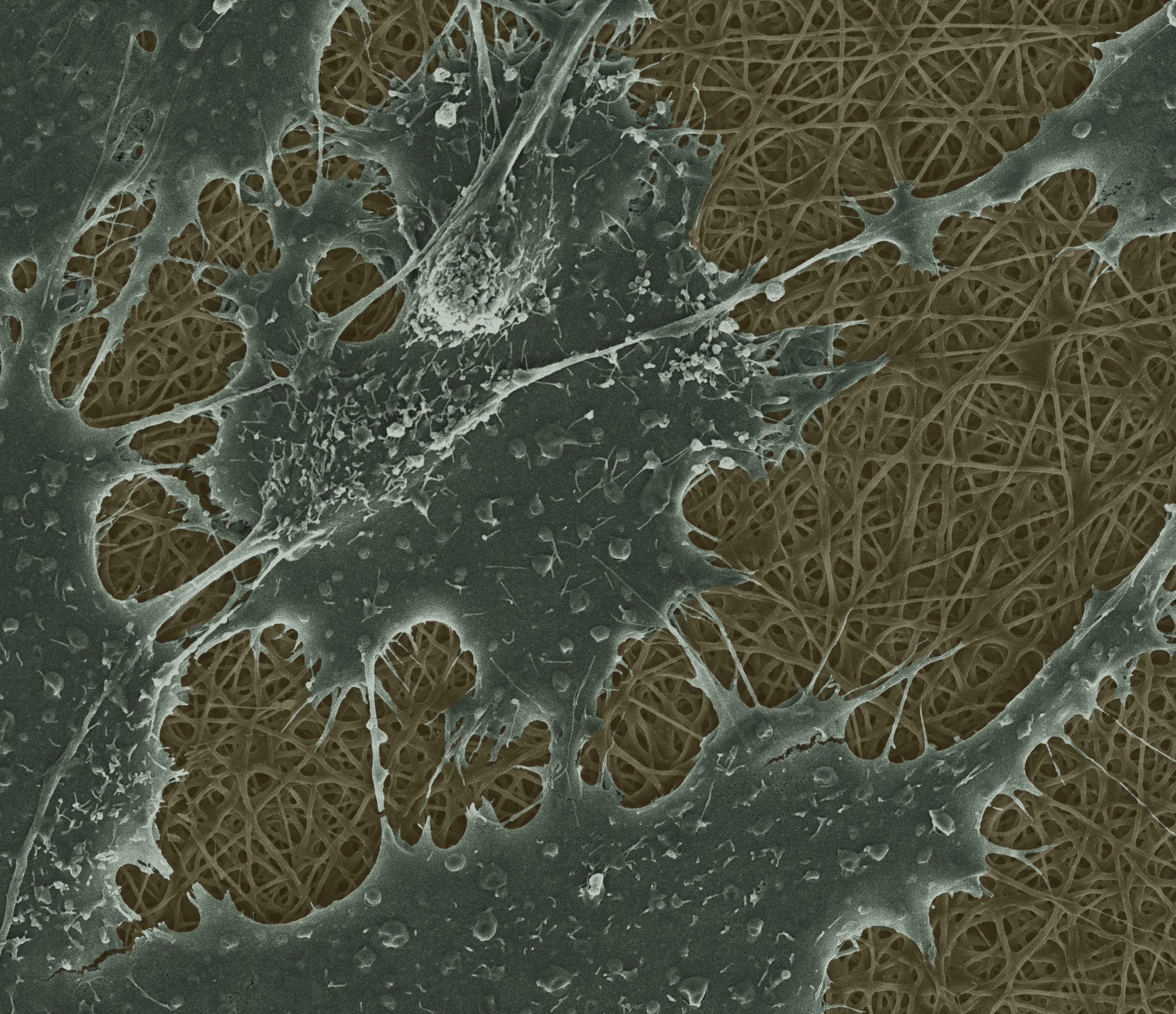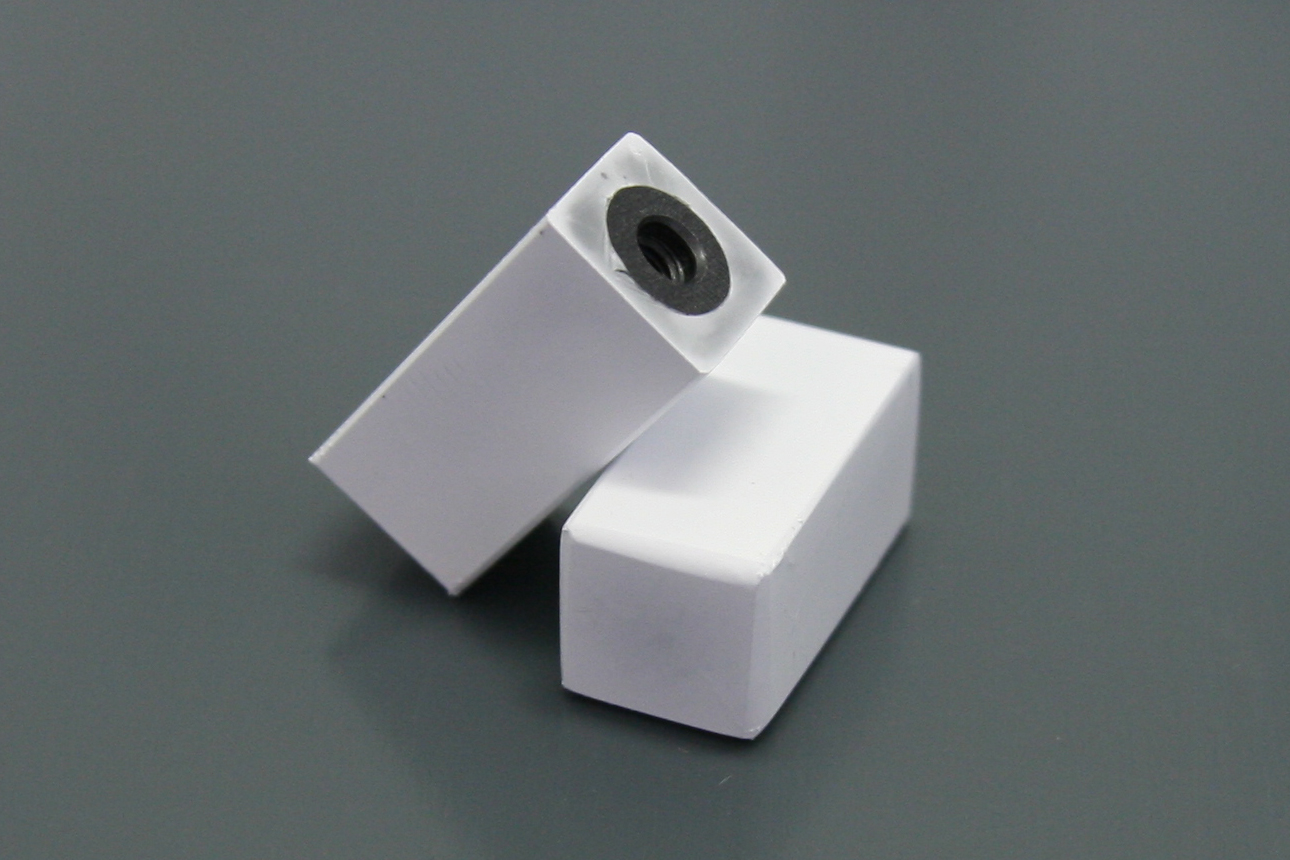Collagen fiber coatings of implant plastics improve biocompatibility



The high-performance plastic polyetheretherketone (PEEK) is used to manufacture implants in the fields of spinal surgery, traumatology and orthopedics. Yet, owing to the surface properties of PEEK, problems can arise during the ingrowth of the implant into the surrounding tissue. In a joint research project of the Fraunhofer Institute for Microstructure of Materials and Systems IMWS and Spin-Plant GmbH, it is now possible to functionalize the surface of PEEK implants with the aid of collagen nanofibers so that the biocompatibility is significantly improved during ingrowth into the tissue.
The material that the implants are made of must be resilient, flexible, and biocompatible with human tissue. Metals such as titanium or cobalt-chromium were the go-to materials for a long time. Polyetheretherketone (PEEK) has been in use as a high-performance plastic since the late 1990s. It is used for bone replacement implants in spinal surgery and orthopedic surgery, as a dental prosthesis for dental implants and dentures, and in cardiac surgery. In comparison with implants made of a metal alloy, PEEK implants feature not only better mechanical properties that are similar to those of human bone, but they are also X-ray and MRI compatible. However, the drawback of working with the PEEK material is its inert surface property, which makes implant integration into the surrounding tissue difficult or even impossible.
To solve this problem, Fraunhofer IMWS collaborated with SpinPlant GmbH in the three-year project "SpinCoat" to explore a solution to modify the surface of PEEK, improving the osteoconductive and bioresorbable interactions of the human tissue and the implant surface. "The research focus in terms of material was to enable a stable, firmly adherent, biocompatible nonwoven fiber coating of electrospun protein nanofibers on an inert PEEK surface. We have succeeded in mimicking the structure of the extracellular matrix of human connective and bone tissue and fixing it as a fiber coating on the implant surfaces, thereby providing an attractive substrate for cell growth, which in turn favors implant integration," says Dr. Andrea Friedmann, project leader at Fraunhofer IMWS.
A variety of functionalization strategies were employed in the project, involving the investigation of physical, structural and biological changes to the implant surface to demonstrate biocompatibility. For the production of the electrospun collagen nonwovens, the research team determined an optimal mixing ratio of collagen and solvent for spinning, while maintaining the native structure of the collagen during the process of spinning collagen into nanofibers. For the application of the electrospun protein nanofibers to the PEEK material, a classical electrospinning setup was used, which was specifically adapted for the polyetheretherketone coating process.
The project team was able to improve the properties of the collagen fleeces by testing and incorporating additives without pharmaceutical effect and nanoparticles. Nanocrystalline hydroxyapatite was used during the incorporation of the particles, which provided consistent viscosity and conductivity behavior. As the nanofibers exhibit high solubility and low mechanical strength, they were crosslinked, bonding the biopolymers together without destroying the delicate nanostructure. The researchers at Fraunhofer IMWS conducted the microstructural examinations by means of scanning electron microscopy (SEM) and micro-computed tomography (µCT).
The technology developed in the project as part of the "Chemistry and Biosystems Engineering" performance and transfer center for functionalizing the inert PEEK surface using electrospun protein nanofibers provides a starting point for further research into biocompatible nonwoven coatings for PEEK materials. In addition, a patent application related to the process is currently in preparation.